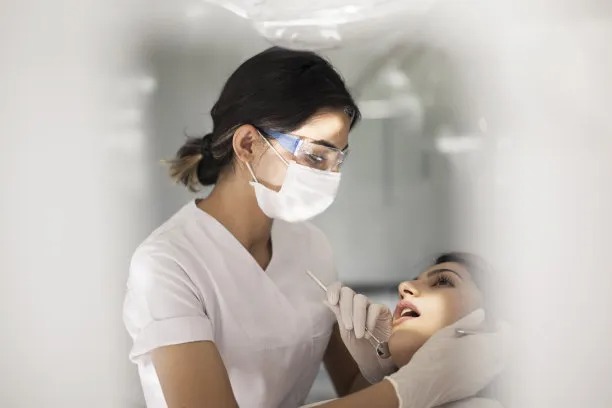Prevention and Treatment Strategies for Periodontal Disease
Summary: Periodontal disease is a common oral health issue that affects many individuals. This article explores prevention and treatment strategies for periodontal disease, focusing on four key aspects to promote oral hygiene and overall health.
1. Importance of Oral Hygiene

Effective oral hygiene practices, such as regular brushing and flossing, are essential in preventing periodontal disease. Maintaining a clean mouth helps to eliminate bacteria and plaque buildup, reducing the risk of gum inflammation and infection.
Poor oral hygiene can lead to gum disease, causing symptoms like bleeding gums, bad breath, and tooth loss. Dentists recommend brushing at least twice a day and flossing daily to maintain optimal oral health.
In addition to personal oral care routines, regular dental check-ups and cleanings are crucial for early detection and intervention of periodontal issues. Dentists can provide professional cleanings to remove tartar and plaque that cannot be addressed through regular brushing.
2. Risk Factors and Prevention Methods
Several risk factors contribute to the development of periodontal disease, including smoking, genetics, poor nutrition, and certain medical conditions. Understanding these risk factors can help individuals take preventive measures to protect their oral health.
Preventive strategies include quitting smoking, maintaining a balanced diet rich in vitamins and minerals, and managing underlying health conditions like diabetes. Regular visits to the dentist for comprehensive oral exams can help monitor oral health and address potential issues early on.
Furthermore, incorporating antimicrobial mouth rinses and topical treatments recommended by dental professionals can aid in reducing bacteria levels in the mouth and promoting gum health.
3. Professional Treatment Options
For individuals already experiencing symptoms of periodontal disease, seeking professional treatment is essential to prevent further progression and restore oral health. Common treatment options include scaling and root planing, which involve deep cleaning to remove plaque and tartar from below the gumline.
In advanced cases, surgical interventions such as flap surgery or tissue grafting may be necessary to repair damaged gum tissues and restore the supportive structures around the teeth. Dentists may also prescribe antibiotics or antimicrobial medications to manage infection and promote healing.
Patient education and personalized treatment plans are key components of effective periodontal disease management. Dentists work closely with patients to develop tailored strategies for ongoing oral care and maintenance to prevent disease recurrence.
4. Holistic Approach to Oral Health
In addition to traditional dental interventions, adopting a holistic approach to oral health can complement preventive and treatment strategies for periodontal disease. Practices such as stress management, adequate hydration, and regular exercise can contribute to overall well-being and oral health.
Alternative therapies like acupuncture or herbal remedies may also provide adjunctive benefits in reducing inflammation and promoting gum healing. Integrating these holistic practices with conventional dental care can enhance the effectiveness of treatment outcomes and support long-term oral health.
Summary:
Prevention and treatment strategies for periodontal disease encompass a multi-faceted approach involving oral hygiene, risk factor mitigation, professional treatments, and holistic health practices. By adopting a comprehensive strategy that addresses various aspects of oral health, individuals can effectively manage and prevent periodontal disease, promoting overall well-being.
This article is compiled by Vickong Dental and the content is for reference only.



